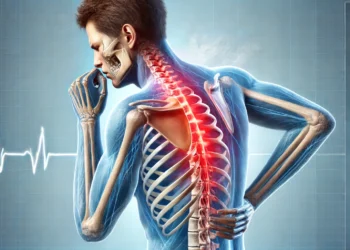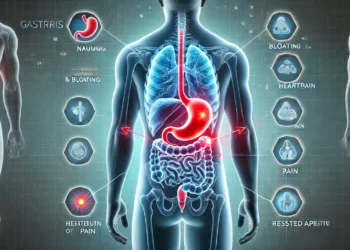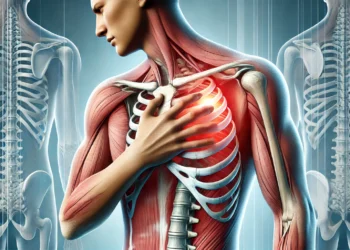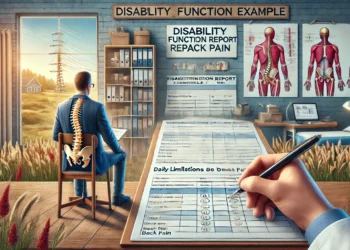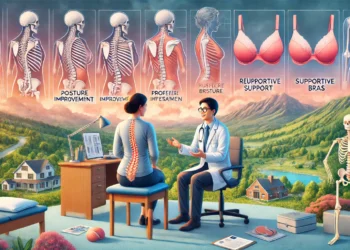Dorsalgia, a medical term commonly used to describe back pain, is a condition that affects millions of people worldwide. This condition can occur in various parts of the back, including the upper, middle, and lower regions. If you’re experiencing discomfort in your back or have been diagnosed with dorsalgia, it’s essential to understand its definition, causes, symptoms, and treatment options.
What is Dorsalgia?
Dorsalgia is the medical term used to refer to pain or discomfort in the back, particularly in the region of the spine. The word “dorsalgia” is derived from the Latin words “dorsum” (meaning back) and “algia” (meaning pain). While dorsalgia refers to general back pain, it can sometimes be categorized further based on the location of the pain, such as:
Read Also: Lower Back Pain When Bending Over – Pain in the Lower Back When Bending Over!
- Cervical Dorsalgia: Pain in the neck region.
- Thoracic Dorsalgia: Pain in the upper or middle back.
- Lumbar Dorsalgia: Pain in the lower back (often referred to as “low back pain”).
This condition can be acute (short-term) or chronic (long-lasting), and the severity can range from mild discomfort to debilitating pain.
Common Causes of Dorsalgia
Several factors can contribute to the development of dorsalgia. These causes can vary from lifestyle choices to underlying health conditions. Some of the most common causes include:
- Muscle Strain or Sprain: Overuse or sudden movements can lead to strained muscles or ligaments in the back, causing pain.
- Poor Posture: Sitting or standing with poor posture for prolonged periods can put strain on the back and lead to discomfort.
- Herniated or Bulging Discs: When the spinal discs (the cushion-like structures between vertebrae) become damaged or displaced, they can press on nerves, causing pain.
- Arthritis: Conditions like osteoarthritis or rheumatoid arthritis can affect the spine, leading to stiffness and pain in the back.
- Injuries or Accidents: Accidents or injuries, such as car accidents or falls, can result in fractures or damage to the spine or muscles, contributing to dorsalgia.
- Scoliosis: An abnormal curvature of the spine can lead to pain and discomfort, especially when left untreated.
Symptoms of Dorsalgia
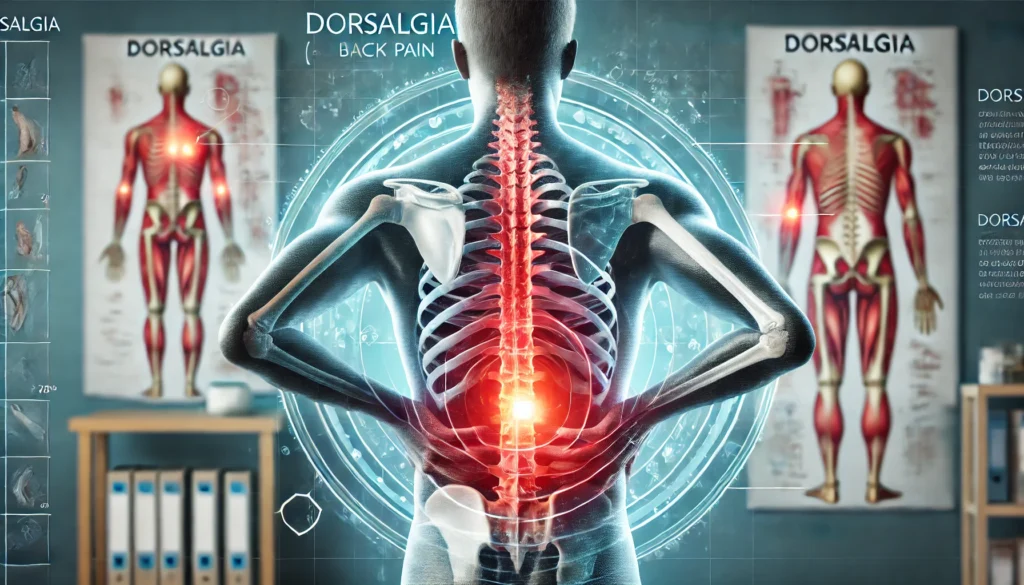
The symptoms of dorsalgia can vary depending on the cause and location of the pain. Common signs of dorsalgia include:
- Localized Back Pain: Pain that is confined to the back or one specific area, such as the lower or upper back.
- Radiating Pain: Pain that spreads to other areas, such as the legs or arms, due to nerve compression.
- Muscle Stiffness: Tightness in the muscles around the affected area, often making it difficult to move.
- Numbness or Tingling: Nerve involvement can cause sensations like numbness or tingling in the arms or legs.
- Pain with Movement: Pain that worsens with certain movements, such as bending, twisting, or lifting heavy objects.
How is Dorsalgia Diagnosed?
If you’re experiencing back pain, it’s important to consult a healthcare professional for a proper diagnosis. A doctor may perform the following to diagnose dorsalgia:
- Medical History: The doctor will ask questions about your symptoms, medical history, and lifestyle to understand the potential cause of your pain.
- Physical Examination: A physical exam will help the doctor assess your range of motion, posture, and any areas of tenderness or muscle spasms.
- Imaging Tests: In some cases, your doctor may recommend X-rays, MRIs, or CT scans to get a clearer view of your spine and identify any structural issues.
Treatment Options for Dorsalgia
The treatment for dorsalgia depends on the underlying cause and the severity of the condition. Here are some common treatment options:
- Rest and Activity Modification: Giving your back time to heal and avoiding activities that may aggravate the pain is crucial. However, prolonged bed rest is generally not recommended.
- Physical Therapy: A physical therapist can teach you exercises to strengthen the muscles around your spine, improve posture, and increase flexibility.
- Heat and Cold Therapy: Applying a cold compress or heat pad to the affected area can help alleviate pain and reduce inflammation.
- Chiropractic Care: Spinal adjustments performed by a chiropractor may help improve alignment and relieve pain in some cases.
- Injections or Surgery: In severe cases, injections or surgical interventions may be necessary to address nerve compression or other underlying issues.
Preventing Dorsalgia
While it may not always be possible to prevent dorsalgia, adopting healthy habits can help reduce your risk of developing back pain. Some preventive measures include:
- Maintaining Good Posture: Ensure that you sit and stand with proper alignment to reduce strain on your back.
- Exercise Regularly: Strengthening the muscles in your back and abdomen can help support your spine and prevent injuries.
- Ergonomic Workspace: If you work at a desk, make sure your workstation is ergonomically designed to promote good posture and reduce strain on your back.
- Lift Properly: Always use your legs, not your back, when lifting heavy objects to avoid strain.
FAQs:
1 What is dorsalgia?
Dorsalgia refers to pain or discomfort in the back, including the upper, middle, and lower regions of the spine.
2 What causes dorsalgia?
Common causes include muscle strain, poor posture, herniated discs, arthritis, and injuries.
3 How is dorsalgia diagnosed?
Diagnosis involves a medical history review, physical examination, and sometimes imaging tests like X-rays or MRIs.
4 What are the symptoms of dorsalgia?
Symptoms include localized or radiating back pain, muscle stiffness, numbness, and pain with movement.
5 How can dorsalgia be treated?
Treatment options include rest, physical therapy, pain relief medications, and, in severe cases, injections or surgery.
Conclusion:
Dorsalgia is a common condition that affects many people at some point in their lives. Whether caused by muscle strain, poor posture, or underlying health conditions, it’s important to understand the definition, symptoms, and treatment options available. By consulting a healthcare professional and making appropriate lifestyle changes, you can manage and even prevent dorsalgia from interfering with your daily life. If you’re experiencing back pain, don’t hesitate to seek medical advice to get the proper diagnosis and treatment for your condition.



